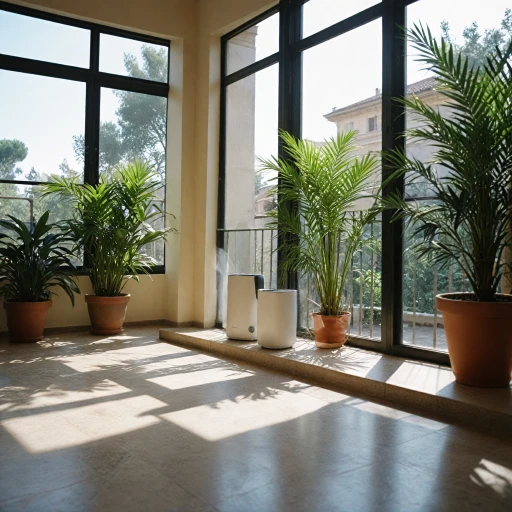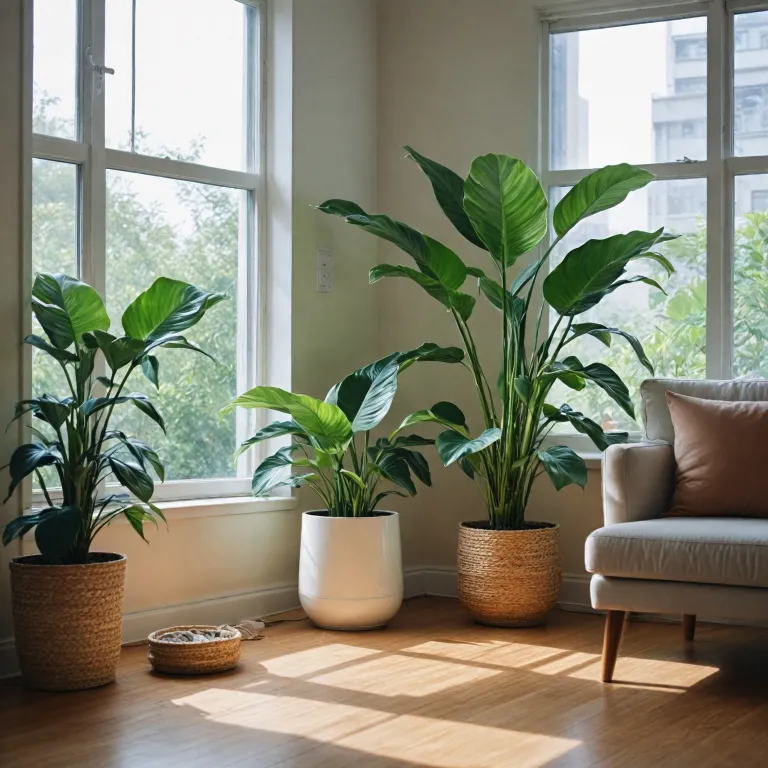Understanding How Air Purifiers Work
Mechanism of Air Purification
In order to understand how air purifiers eliminate odors, we must first grasp their fundamental operating principles. Air purifiers function by drawing in indoor air, passing it through various filters, and then releasing clean air back into the environment.
Let's break down the key components typically involved in this process:
- Filters: The primary mechanism for cleaning air, filters trap airborne particles, including pollutants and allergens.
- HEPA Filters: High-Efficiency Particulate Air (HEPA) filters, often found in high-performance purifiers, are designed to capture up to 99.97% of particles as small as 0.3 microns, which includes dust, pollen, and pet dander. When it comes to odor removal, they are not as effective since odors are gaseous.
- Activated Carbon Filters: For tackling odors, an activated carbon filter is crucial. These filters use porous carbon to absorb volatile organic compounds (VOCs) and various smells, making them effective for smoke and odor removal.
- CADR Ratings: The Clean Air Delivery Rate (CADR) metric, which indicates the volume of filtered air an air purifier produces, is a useful measure when considering effectiveness across different room sizes. Ensuring the purifier's CADR aligns with your indoor space helps achieve the best results in odor elimination.
- Fan Speed and Auto Mode: Most air purifiers come with adjustable fan speeds and an auto mode feature. Increasing fan speed can amplify purifier effectiveness, though it may increase noise levels. Auto mode dynamically adjusts the fan speed based on the current air quality, optimizing both performance and energy efficiency.
Air purifiers from brands like Shark, Austin Air, and others offer various configurations to match different needs. Selecting the best air purifier involves considering your specific requirements, such as room size and the types of odors you encounter. The right choice will not only address smells but also improve overall indoor air quality, leading to a fresher living environment. For optimal results, it's essential to continually check and maintain your purifier, which involves regular filter changes and general upkeep.
Types of Air Purifiers and Their Effectiveness
Different Varieties and Their Efficacy
The world of air purifiers is diverse, and understanding the types available can help you make an informed decision. These devices are designed to eliminate odors, purify air, and enhance indoor air quality. Here's a look at the common types of air purifiers and how they aid in odor removal:
- HEPA Filters: High-Efficiency Particulate Air (HEPA) filters are renowned for capturing particles as small as 0.3 microns. While excellent at trapping pollutants like pet dander, dust, and smoke, they primarily excel in cleaning air rather than focusing on odors. Pairing a true HEPA filter with a carbon filter enhances the elimination of smells.
- Activated Carbon Filters: These are specifically designed to absorb odors and gases. The activated carbon filter uses a porous material that captures volatile organic compounds (VOCs) and smells, making them indispensable for eliminating household odors. A carbon filter's effectiveness hinges on its quality and quantity of carbon.
- Austin Air Purifiers: Known for their efficiency, Austin air purifiers often combine HEPA and activated carbon filters, which allows them to tackle both pollutants and odors effectively. Their robust build ensures longevity and they are well-suited for larger spaces.
- Purifiers With Auto Mode: These models adjust the fan speed according to the air quality in the room. By automatically increasing or decreasing speed, they maintain optimal air purification and odor removal.
- Neverchange Air Filters: Brands like Shark have introduced filters that claim not to need frequent changes, reducing maintenance effort. While these filters simplify maintenance, regular performance checks are advised to ensure optimum efficacy.
- CADR Ratings: The Clean Air Delivery Rate (CADR) provides a measure of a purifier's effectiveness in specific room sizes. When evaluating purifiers, considering the CADR is crucial. Higher ratings often indicate superior performance in reducing odors and cleaning air efficiently across larger square feet.
To truly assess a purifier's odor-fighting ability, it’s essential to read full product details and reviews. Understanding how an air purifier functions in conjunction with your specific needs and room size ensures you select the best air purifier tailored to your environment.
Common Household Odors and Their Sources
Sources of Household Odors
To effectively combat the unpleasant smells in your living space, it is crucial to identify their common sources. Household odors often stem from various elements present in the indoor environment, and understanding them is the first step in addressing the issue with the right air purifier.
- Cooking Smells: Food preparation, especially frying and sautéing, releases strong, lingering aromas. These scents can permeate multiple rooms, making a high CADR-rated air purifier equipped with a carbon filter an essential choice for kitchens and dining areas.
- Pet Odors: In homes with animals, pet dander and odors from litter boxes or cages contribute significantly to the indoor air profile. A purifying unit with a true HEPA filter will effectively capture dander particles, while an activated carbon component addresses unwanted pet smells.
- Smoke: Whether from cigarettes, cigars, or even fireplaces, smoke is a persistent odor culprit that many homeowners face. The capability of an air purifier to deal with smoke is often indicated by its smoke CADR rating. Units like the shark neverchange or austin air, with high smoke CADR, provide improved performance in smoke-filled environments.
- Mold and Mildew: Damp areas such as bathrooms and basements can harbor mold and mildew, leading to musty odors. Maintaining clean air in these rooms requires a purifier capable of continuous operation, possibly in auto mode to adjust fan speed and filter efficiency based on detected air quality levels.
Having identified where unwanted odors originate, selecting the best air purifier for these issues involves considering the room size and the purifier max specifications, ensuring the device is suitable for your space. From large models for expansive areas to compact designs like purifiers for small or medium-sized rooms, the options are varied and tailored to meet specific needs.
Choosing the Right Air Purifier for Odor Removal
Considerations for Selecting an Air Purifier to Combat Odors
Choosing the right air purifier is critical when your primary goal is to eliminate unpleasant odors, whether from smoke, pet dander, or general household smells. Here's a brief guide to making an informed decision:
- Type of Filter: Activated carbon filters are known for their effectiveness in trapping odor-causing particles. These filters absorb gases and smoke, making them suitable for rooms with peculiar smells. A HEPA filter combined with activated carbon is a powerful duo, as the HEPA filter captures particulates while the carbon filter eliminates odors.
- Room Size Compatibility: Pay attention to the air purifier's recommended room size, usually measured in square feet. Opt for a model with a CADR (Clean Air Delivery Rate) that matches or exceeds your room's square footage to ensure optimal performance. Some devices offer coverage over multiple rooms, while others might be better for a single bedroom.
- Adjustable Fan Speed and Auto Mode: An air purifier with customizable fan speeds and an auto mode feature can better address fluctuating indoor air quality and odor levels. These options allow the device to adapt to the changing conditions in your space, providing clean air without constant manual adjustment.
- Brand Reputation: Consider well-regarded manufacturers known for their reliability and innovation in air filtration technology. Some brands, like certain models from Austin Air or Shark, are reputed for their ability to tackle odors effectively. Reading product reviews can give you insights into real-world performance.
- Maintenance Needs: Regular maintenance is crucial for long-lasting efficiency. Check how often the air purifier's filters need replacing and if they are easily accessible. Some models, like the "Shark NeverChange" air purifier, boast filters that require less frequent changes, potentially reducing ongoing costs.
Selecting an air purifier with these features will ensure you're equipped to handle indoor odors efficiently, improving your home’s air quality in the process.
Maintenance Tips for Optimal Performance
Ensuring Your Air Purifier Performs at Its Best
Proper maintenance is crucial to ensure that your air purifier consistently delivers optimal results, especially when it comes to odor removal. The type of air purifier and its filters greatly influence both performance and air quality, so regular maintenance checks are non-negotiable. Here are some essential tips:
- Change Filters Regularly: Most air purifiers, including those with HEPA and activated carbon filters, require periodic replacement to maintain efficacy. The frequency of replacement can vary based on the type of filter. HEPA filters usually need changing every 12 to 18 months, while activated carbon filters may need replacement every 3 to 6 months, depending on how heavily they're used and the quality of the indoor air they're working in.
- Monitor CADR and Room Size: It's important to check that the air purifier you're using is suitable for the square feet it needs to cover. This ensures that the Clean Air Delivery Rate (CADR) aligns with the room size, effectively filtering odors, smoke, and particles from the air.
- Utilize Auto and Fan Modes: Many modern purifiers come with auto mode and adjustable fan speed settings. Using these features can optimize performance. For instance, higher fan speeds can be used when there's an odor or lots of smoke present, and auto mode can help adjust settings based on real-time air quality changes.
- Keep the Unit Clean: Dust and particles can accumulate on the exterior and interior components of the air purifier. Regularly clean the unit as per the manufacturer’s instructions to prevent blockages that could affect performance. This is especially important for models such as the Shark and Austin air purifiers, where dust can clog intricate components.
- Review and Test Sensors: If your purifier has sensors related to air quality, periodically check them to ensure they're working correctly. A malfunctioning sensor could compromise the unit's effectiveness in tackling odors and maintaining clean air.
By following these tips, you'll enhance the life and effectiveness of your air purifier. Remember, regular maintenance not only helps in controlling odors but also combats other air contaminants such as pet dander and smoke, ensuring you enjoy the best air quality indoors.
Additional Benefits of Using Air Purifiers
Enhancing Indoor Spaces with Cleaner Air
Air purifiers are not only effective at removing unpleasant odors and unwanted smells from your home, but they also offer several additional benefits that contribute to overall cleaner indoor air. By using advanced technologies like HEPA filters and activated carbon filters, air purifiers can significantly improve air quality.
- Improved Health and Well-being: By neutralizing pet dander, smoke, and other allergens, air purifiers help maintain a healthier living environment. This is particularly beneficial for individuals suffering from allergies or respiratory conditions.
- Reduced Airborne Pollutants: Air purifiers, especially those with true HEPA filters, are adept at capturing airborne particles and pollutants. They effectively remove microscopic particles that contribute to indoor air pollution.
- Cleaner Surroundings: With systems like the Shark Neverchange air purifier, you don’t have to worry about constant filter replacements. Air purifiers with auto mode and adjustable fan speed settings help address varying levels of odors and dust in your space.
- Cost-Efficiency: Although the upfront cost of high-quality air purifiers might be noteworthy, such as Austin Air or other top models, the long-term benefits include cleaner air with fewer associated health costs.
- Versatile Application: Many air purifiers are designed to cover different room sizes, measured in square feet. When deciding on the best air purifier for your needs, factors such as CADR (Clean Air Delivery Rate) and room size should be considered to ensure optimum performance.
Investing in a reliable air purifier not only helps manage odors effectively but also contributes to creating a clean, comfortable environment that enhances life quality, ensuring that every breath of air you take is fresh and pure. Regular maintenance and check-ups are crucial for continued performance, manifesting in better indoor air quality and peace of mind.

